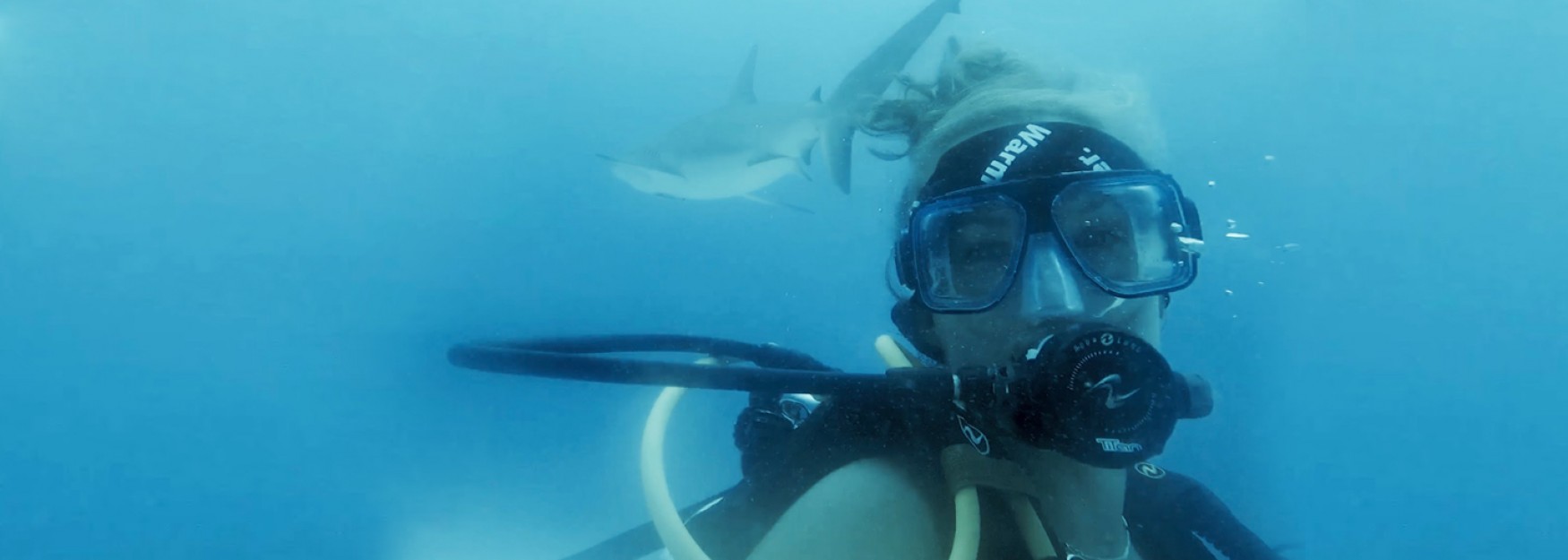


Katie Dimm '22
Making a difference now through cutting-edge research
“Research is my passion. It is the core of what I love about marine science,” explained Katie Dimm ’22.
Katie, a Marine Sciences major, discovered her passion at her high school in Ridgefield, Connecticut. “During my sophomore year I took a course called Science Research. All the students in the course had the chance to do independent research, which was a huge jumping-off point for me. I became really interested in studying levels of methylmercury, an organic form of mercury that is highly toxic accumulating in aquatic environments and in particular, sharks.”
After high school, Katie took a gap year to attend Cape Eleuthera Institute which is devoted to research, education, and outreach on the Cape Eleuthera peninsula in the Bahamas. She was able to carry on her shark research while she was there as well as assist with a large array of projects such as the collection of Caribbean spider crabs, shark tagging studies, and sea cucumber and coral reef surveys. It was also during this year that Katie discovered UNE. “I learned about the research opportunities available there, toured the campus, and fell in love with the place. What I liked the most was that I wouldn’t have to wait to carry out research. I could continue the research I had been working on in high school and in the Bahamas with the guidance of my UNE professors.”
Katie started working with Dr. Stephan I. Zeeman who was particularly supportive of her research, especially when she needed to create a controlled environment to further her research. “Long-living apex predators like sharks seem to have an incredible capability to accumulate and handle massive concentrations of mercury making them phenomenal biomarkers for mercury in ecosystems. However, there is a lot of inconsistency in the mercury levels found in various species of sharks. You might think that the larger the shark, the more mercury would be found in their muscle, but that’s not always the case. More recent research has shown that factors such as the depth in which the shark forages, their metabolism turnover times, or if they warm-blooded or cold-blooded could all impact mercury levels. There are many different factors to consider, and unlike other research, you can’t really keep sharks in controlled environments.”
Working with Dr. Zeeman, Katie set up her own lab within UNE’s Marine Science Center working with green crabs to further her research. “By using baseline organisms to analyze how lower-level concentrations of mercury might start to affect the bottom of the food chain, I can hopefully theorize about what could be happening as we move up the chain.”
Katie is also engaged in exciting research with Dr. John A. Mohan, another of her UNE professors. “Using a method new to mercury research, we will be looking for mercury tracers at each individual level of the sharks’ vertebrae and hopefully we’ll be able to map out its accumulation rates over time. This is something I’m really excited about because it, to the best of my knowledge, hasn't been done before, and it could be monumental in terms of finding a way to look at mercury exposure over a long period of time.”
Despite her demanding research schedule, Katie has found time to participate in another activity that complements her research. As president of UNE’s Scuba Club, Katie has been instrumental in creating discover scuba events to help other UNE students try scuba and get them open water certified. “Being able to scuba and free dive is a sometimes underappreciated skill, but it can enhance your marine research capabilities so much.”
Katie credits her professors in helping her manage her studies, research, and extracurricular activities. “The faculty at the Marine Science Center are so supportive. If you have a solid idea, they're going to help you every step of the way. Their support has shaped my experience and is why I have so many phenomenal things going on. With their collective expertise, I have been able to carry out cutting-edge research that I know will have an impact on our understanding of methylmercury accumulation in our aquatic systems.”